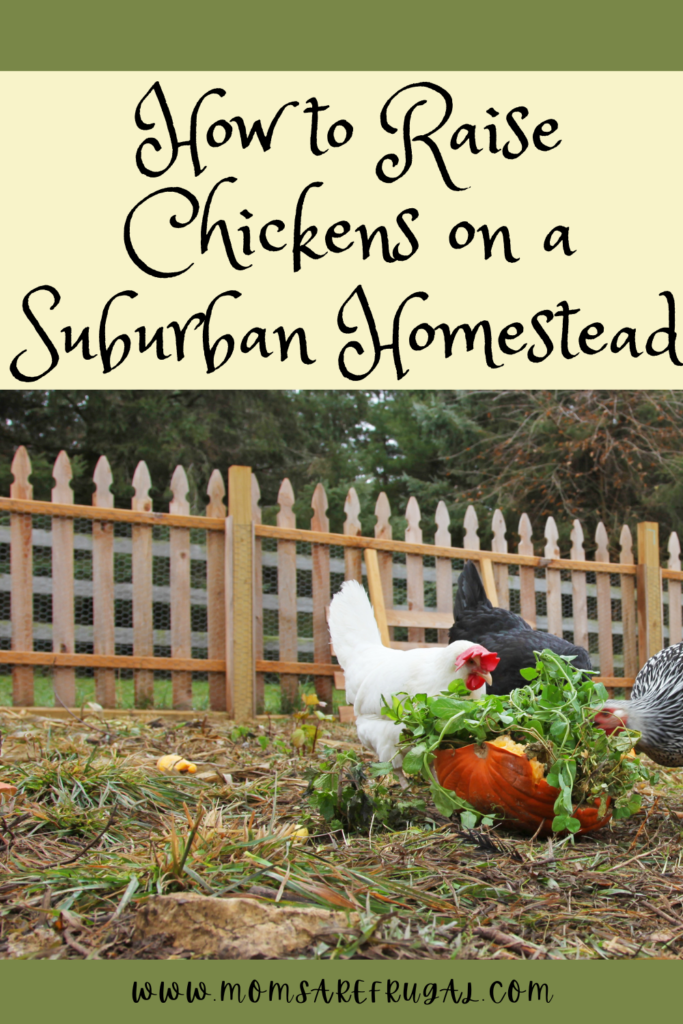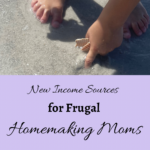We have had chickens for over 10 years living in the suburbs. They are truly the easiest bird to keep. Maintenance is low, and they are resilient. On top of all that, they provide us with breakfast each day. Recently we have had to adjust and find some cost cutting tips to implement.
Keeping chickens isn’t free, and the price of feed has continuously risen. Searching out cost cutting options so that I can keep our beloved birds has become my focus. Since it is winter, growing our food is not a viable direction, so we have started a few other ideas.
Chickens are not super picky eaters, and this makes feeding them easier.
Cost Cutting Food with Broken Egg Shells
Egg Shells provide calcium for chickens. They are great for compost or garden nutrients. Chickens need calcium. With very little effort egg shells can be broken up, smashed into the tiniest remnants and boiled on the stove. This process brings out all of the bacteria that can grow in the egg shell after it has been broken open.
Another way to fix egg shells is to crush them in a ziploc bag with a rolling pin. Then place on an oven tray for about 10 minutes at 275 degrees. When they are done, let the crushed shells cool, and seal in an airtight container.
As a treat, let the chickens have the crushed egg shells. Who knew that all of the egg shells I have been throwing away over the years’ actually provided something my chickens and garden needed.
This cost cutting tip takes very little time, but the reward for the chickens is great.

Cull the Flock
This is the removal of low laying, or non-laying hens. Roosters are sometimes culled in the spring during hatching season. We had a family friend that received several roosters from his flock that he received from a school. They had been hatching eggs as a science project and almost all of them turned out to be roosters. Since this man did to want to increase his budget on food, he was processing and selling the roosters.
We do not keep a lot of chickens, and have a system of integration for our flock. Every year I introduce two new chickens, so that older chickens who don’t lay as much aren’t costing us as much. This is the way that I cull my flock without getting rid of any chickens. Ours become pets for a few years. The newer ones produce eggs. Selling the eggs helps with food cost cutting for us. This has been working well for us.
Grow Your Own
Grow your own feed. Last year, I grew some banana squash. Now this entirely was not the chicken food, but it went well and helped them to eat less of the feed we bought. The banana squash gets really big. Almost as big as a pumpkin. I ended up with almost 20 out of one vine.
I used about one squash a week for the chickens to have in addition to their regular feed. The squash took them a good day or two to finish. Also, I give them tomatoes that I choose to not keep from our garden. Another option is to grow corn or sunflowers for backyard chickens. Corn is hard for us to grow, but whatever I have that is leftover, they get. Throughout the winter, I will buy an extra head of lettuce when it is on sale. This gets cut up for them and served over a period of a few days.
Finally, I have given my chickens the tree that our Brussel sprouts grow on. Our chickens loved the Brussel Sprout tree because it was picked clean in a few days. Be creative when searching for food that chickens will eat, they really are easy to please.
Free Range Chickens
I know some people free range their chickens. We are not able to do this because of predators. Free range chickens are able to roam as they want, and eat all of the bugs they can find. Free range chickens eat mosquitoes which really helps in the summer time. We do let our chickens out when we can watch them, but free range is not for us.
If you do choose to free range, this is a viable option to help decrease feed costs. Chickens keep themselves busy with weeds, bugs and anything they find tasty in the backyard.
If you like this post please sign up for more frugal home suburban living ideas!







Leave a Reply